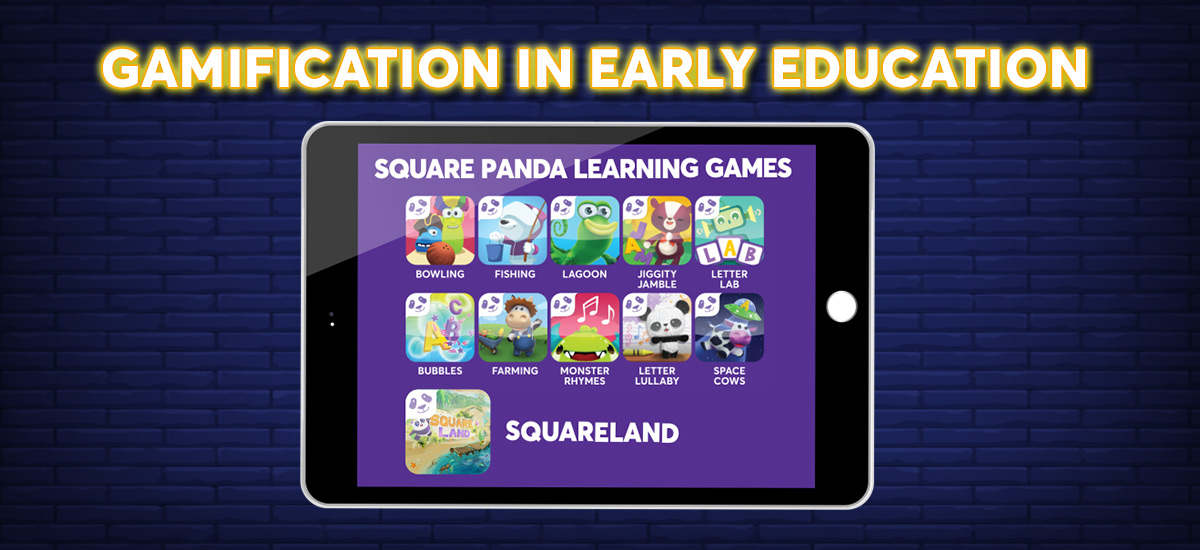Boredom teaches everyone that life isn’t a themed amusement park. Even young brains get easily stuck in the whirlpool of boredom, and it fills the teachers and parents’ mind with a cascade of guilt and accountability. The problem with the current education scenario is that it has somewhat submerged under the heavy load of papers with no fun elements. Learning should have a high ratio of fun quotient.
Children’s brains can easily drift into an elaborate fantasy realm which captures their attention. But, there’s a hope to channel learning equation for kids, all thanks to a new breed of early educational games apps. These apps are popularly known as ‘gamification’ in which educational and game elements are added together to generate a child’s productivity level. Gamification is the new trend in recent times, and multiple brain games for kids have changed the learning environment.
NOW EXACTLY WHAT IS GAMIFICATION?

Understand Gamification And Game-Based Learning.
For starters, gamification of learning is an educational approach which is inspiring students’ to learn using the elements of the game. A young brain gets motivated using the lessons blended with gaming elements. This makes education more fun-filled. Often, gamification and game-based learning are used interchangeably, but it does not mean they are similar.
In the gamifying standard psychological tasks, the research has highlighted game elements can improve the task accessibility, build engagement using a system, and inspiring long-term participation. Yes, gamification is already spreading its roots in a variety of settings; there are game-based early educational platforms, multisensory systems for early learners, and as they level-up chances of winning increases. A slew of research studies have verified the connection between improvement in the engagement and better learning experience to kids. The core idea is to boost the child’s productivity using the concepts of gamified and game-based learning platform.
The gaming elements in game-based learning:

Gaming Elements In Learning
BLOOM OF GAMIFICATION IN EDUCATION
Nick Pelling (a British computer programmer, and entrepreneur) coined the word ‘gamification’ in 2002. He stated, gamification as ‘applying game-like accelerated user interface design to make electronic transactions both enjoyable and fast.’ Thus, games started to begin developed as a learning machine. Now, the gamification concept is implemented in the cultures of education, and it provides maximum value to the students.
HOW DO CLASSROOMS TAKE ADVANTAGES OF GAMIFYING EDUCATION?
The biggest challenge for the teachers is to gain their student’s interest to interact and engage them. For doing so, the teacher’s needs to redefine the course materials or the teaching techniques which will fuel efficient learners. Gamification would chalk out the right direction to encourage students by easily involving them in the classroom activities and learn well.
GAMIFY TO IMPROVE GRADES
Games are gradually turning into verified educative tools which delivers the best to raise the kid’s interest. Following a standard set of the curriculum will improve the transformation of involving preschoolers. Gamification reinforces the context which will profoundly impact classroom management. Students will develop an interest to attend regular classes. The educational games will keep the class actively hooked, engage preschoolers cognitively, emotionally and socially.
For example: If we develop a game that transforms the base of education by adding rewards or bonus points for every correct answer, then children will gain more interest to participate in each of the activities conducted.
Teachers needs to integrate educational games into the curriculum to enhance the involvement of the students. Grades will be surely rising. Moreover, a gamified classroom is a dynamic approach to teach kids.
If you want to know, how to boost a child’s productivity; here’s the lay low of how teachers can seamlessly use the gamification in early education to increase a child’s productivity level.
– GAMIFY TO RAISE ENTHUSIASM: Gamification brings in the fun element in learning any subject, even the uninspired or struggling children can be motivated to reach the next level. Early learners enjoy themselves to participate in games and without realising the fact that they are actually practicing learning. These kids begin to focus on improving schoolwork and improving skills in the class.
– Square Panda’s multisensory learning games, like Letter Lab, Lagoon, Bowling, and Space Cows, inspires kids to explore their potential while they learn to read.
– AIDS COGNITIVE DEVELOPMENT: Numerous studies have reflected that cognitive development turns young brains into more profound learners. Neuroscience theorists believe adding gamified teaching content will stimulate cognitive skills. These skills will help to solve problems, perform strategic planning, thinking and processing the material.
It will produce a stimulating environment for the brain to find answers to questions. Gamification will create a positive effect on their cognitive functions, and achieve autonomy.

Photo by: freepik.com
– GAMIFICATION GENERATES TEAMWORK: Preschoolers will learn to collaborate with their classmates by working together as a team. They are constantly learning something new.
-GAMIFICATION INCREASES ATTENTION SPAN: It is the cold truth: a game will capture students’ attention more than anything else. Games offers unique experiences to the participants. They will like to spend more time learning.
WHAT DOES GAMIFICATION BRING TO EDUCATION?
Let’s listen to our experts’ advice.
KNOW THE SQUARE PANDA WAY OF LEARNING
The future of learning is in the child’s early development. Kill their boredom with curiosity and advance their interest in fun learning games!
Square Panda’s neuroscience research-based multisensory learning platform to absorb the elements of phonemes, phonological awareness, vocabulary, rhymes, etc. Each lesson guides early learners with personalised gameplay.
If you are searching for the best practices for gamifying the delivery of education, then drop down your comments and we’ll help you attain your goals.
Learn how to teach your kids the multisensory way, watch the video here.
You can also connect with us on Facebook and Linkedin for more information.
–Nidhi Parikh, SEO Content Writer, Square Panda India

